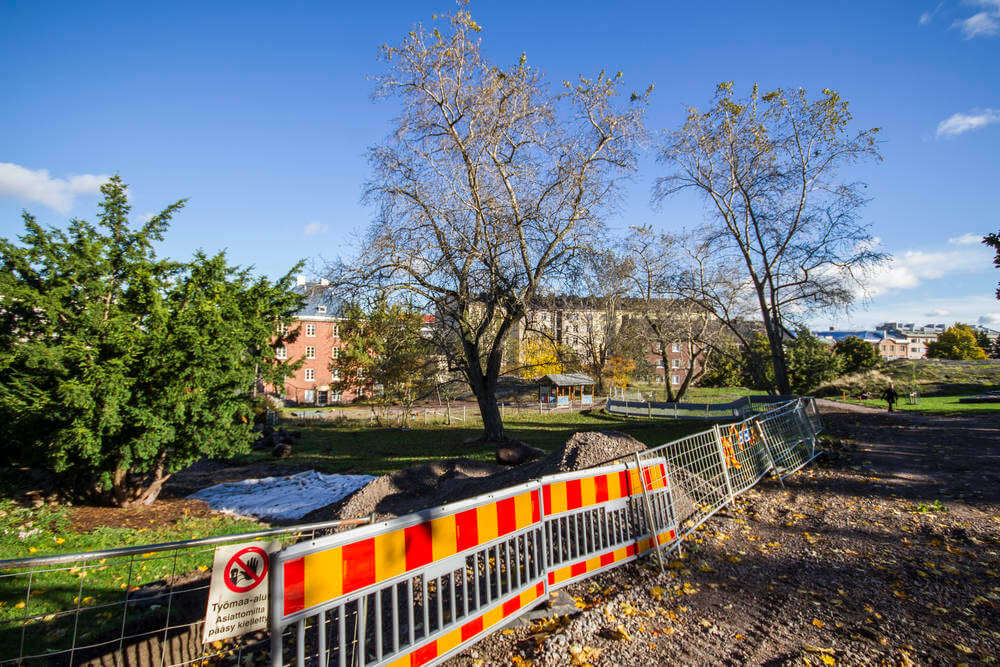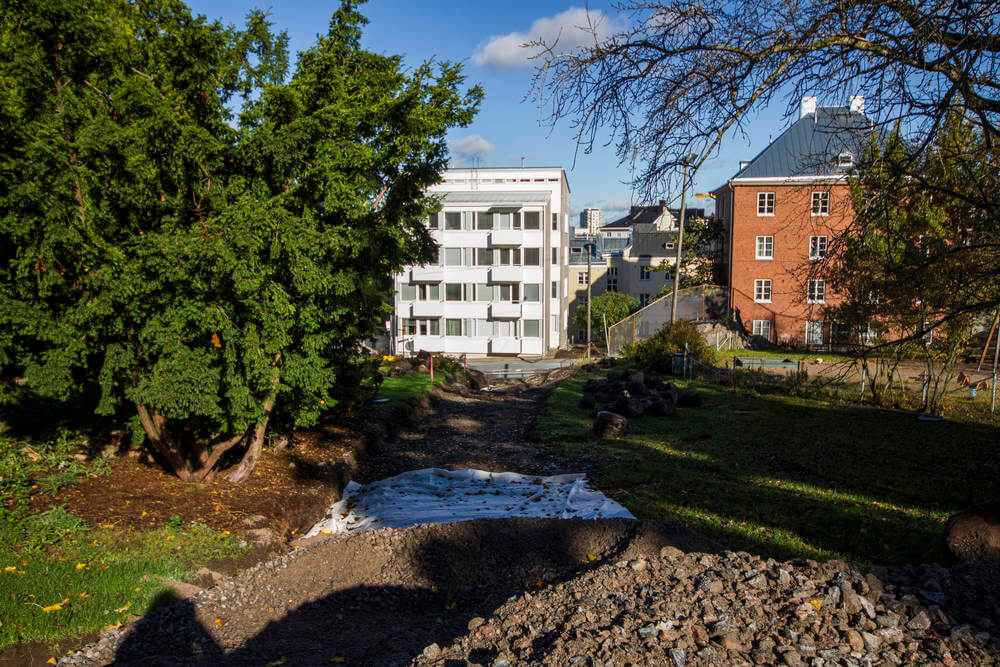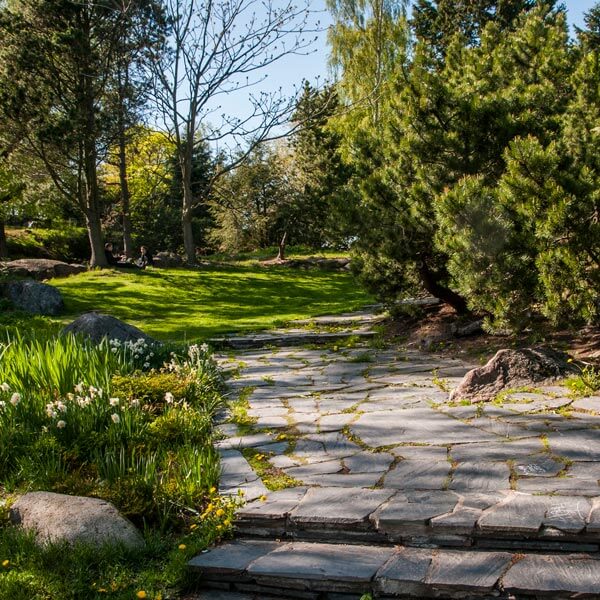In 1960 and 1961 a somewhat secluded section of Alppipuisto Park behind the Helsinki Hall of Culture (Kulttuuritalo) was partitioned to create a fine gardening exhibition area on the rocky hill. The resulting park was the result of collaboration between the City of Helsinki and the Gardening Association of Helsinki (Helsingin puutarhaseura).
A small stream flows through the park and into a basin. Paths were constructed out of slabs of slate. The park was named in 1970, the 100th anniversary of the birth of Vladimir Ilyich Lenin (1870–1924). At night the park was fenced and closed all the way into the 1990s, until this practice was discontinued for cost-cutting reasons. Partly as a result, the park began to fall into disrepair.
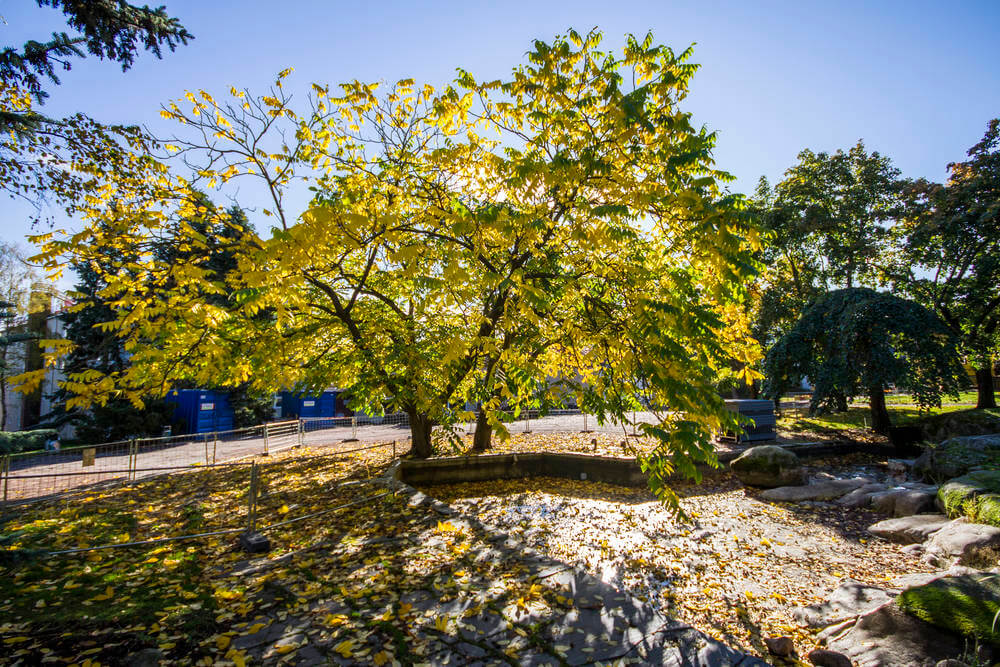
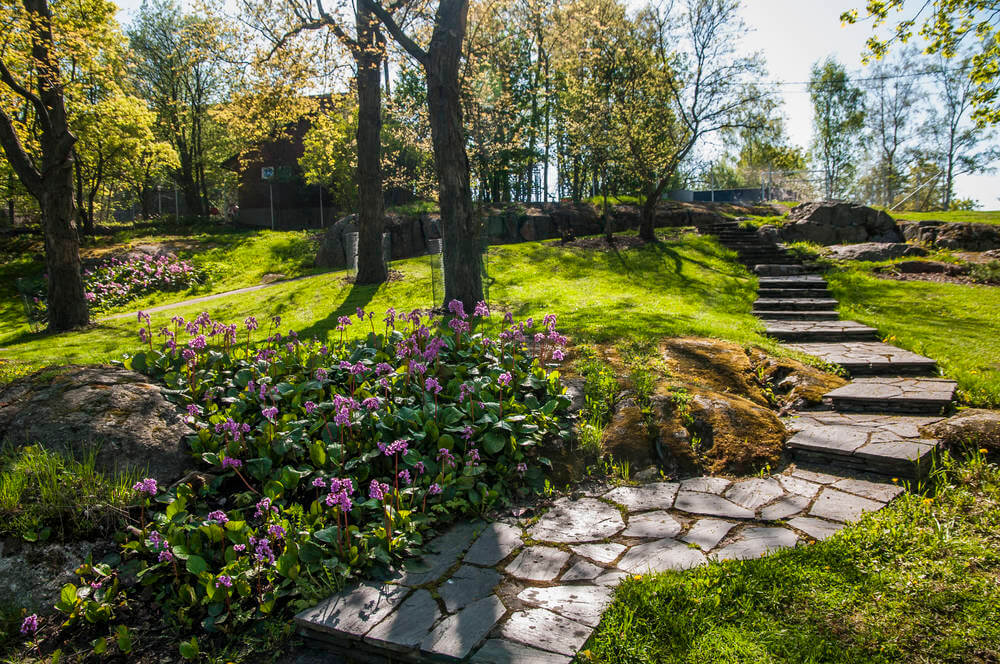
The design of the park is interesting. A small stream-fed pond greets visitors upon entering the park through the gate at the Sturenkatu end. The pond is adorned by an impressive exotic tree, a Japanese walnut (Juglans ailantifolia). The slate paths lead to different sections of the park. Many rare plants dating back to the original gardening exhibition still grow in the park. The two other entrances to the park are situated to the north on Vesilinnankatu and to the south opposite the main gate to Linnanmäki Amusement Park. The view from the Linnanmäki entrance is particularly impressive.
Although some of the original plants have disappeared over the years, the park is still popular among gardening enthusiasts. For example, there are numerous fragile and other rare plants that cannot be found in other parks in Helsinki. Lenin Park is a fine example of how an attractive and diverse green area can be created atop practically bare rock. A significant portion of the woody plants were planted especially for the gardening exhibition, and they continue to thrive there.
Interesting plants include European yew varieties (Taxus baccata ‘Washingtonii’ and ‘Repandes’), the Wier’s cutleaf silver maple (Acer saccharinum ’Wieri’), the Korean thuja (Thuja koreaiensis) and the snow gooseberry (Ribes niveum). The Canadian hemlock (Tsuga canadensis) is probably the most impressive of its kind in Helsinki. Also worth seeing is the Thujopsis dolabrata and the dwarf Alberta spruce (Picea glauca ‘Conica’). The Korean thuja (Thuja koreaiensis) in the centre of the park is most likely the only one of its kind in Helsinki, and it is easily recognisable by its ornamental leaves that are white underneath. Unfortunately, the severe winter of 2003 had a devastating effect on many of the plants, especially the conifers.
In 2008 the park made the news when there was talk of erecting a monument to Lenin, which indeed might have transformed the park into a real tourist attraction.
Renovation of the park
Lenin Park is undergoing a major renovation that is being carried out in phases according to plans drawn up by Näkymä Landscape Architects. The aim is to complete the work by 2014. The aim of the plans is to maintain and restore the original character of the park as it was built in the 1960s. The entrances are being reorganised, and structures that are in poor condition are being repaired. The biggest project involves repairs to the leaking water feature. The old fence around the park is also being replaced, the slate paths and steps are being repaired, and the park furniture is being renewed. The playground by the street Vesilinnankatu is being removed to lack of use.
The parking area by the Sturenkatu entrance is being limited to just 17 parking spaces, including 2 invalid parking spaces. There are an additional 12 parking spaces by the Vesilinnankatu entrance.
The plants in the park are being restored and partly renewed according to the original design by Maj-Lis Rosenbröijer. Trees and shrubs in poor condition are removed, and those that were part of the original design are being replaced. The coppice that was impeding the valuable plants is also being removed, while entirely new plants are being introduced around the entrances.
